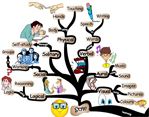Possible Warning Signs of a Struggling Student
Is your child avoiding a specific subject matter during homework time, leaving it for the last minute, forgetting to do it, or forgetting to turn it in?
Watch your child when they do homework- what do you see?
It’s OK if… She stands rather than sits to do the work.
It’s not OK if… She stands to do the work and sharpens all 15 pencils, organizes and reorganizes the homework area, and then needs a snack before starting her homework.
It’s OK if… Your child takes a break after school to unwind before starting his homework.
It’s not OK if… He leaves his homework until half an hour before bedtime on a consistent basis and or “forgets” to do it.
It’s OK if… She forgets her homework at home every once in a while.
It’s not OK if… Homework is forgotten on a weekly basis or they did it, but can’t find it when it’s time to turn it in.
These may be signs that your child is having difficulty and is finding ways to avoid doing the work. It is important to identify the specific difficulty that the child is having, is it academic, social, emotional, organizational, or a combination of any of the above factors.
Ways to help your child:
- Have them show you their work – no matter how old they are.
- Have all supplies ready to go before homework starts.
- Provide time frames in which homework needs to be done.
- Don’t wait to talk to the teacher about your concerns.
- Create a system for remembering to do and bring back work.
 If a child is struggling in school and a teacher says to give them extra time to practice in their toughest subject area, where can you find the extra time in a busy family schedule?
If a child is struggling in school and a teacher says to give them extra time to practice in their toughest subject area, where can you find the extra time in a busy family schedule? Did you know that you and your child each have a specific style when it comes to learning new information? This is called your learning style. Your learning style has guided you in learning information from grade school to grad school. Learning style refers to the various ways you learn new information and figure things out. Typically there are 4 different learning styles:
Did you know that you and your child each have a specific style when it comes to learning new information? This is called your learning style. Your learning style has guided you in learning information from grade school to grad school. Learning style refers to the various ways you learn new information and figure things out. Typically there are 4 different learning styles:



